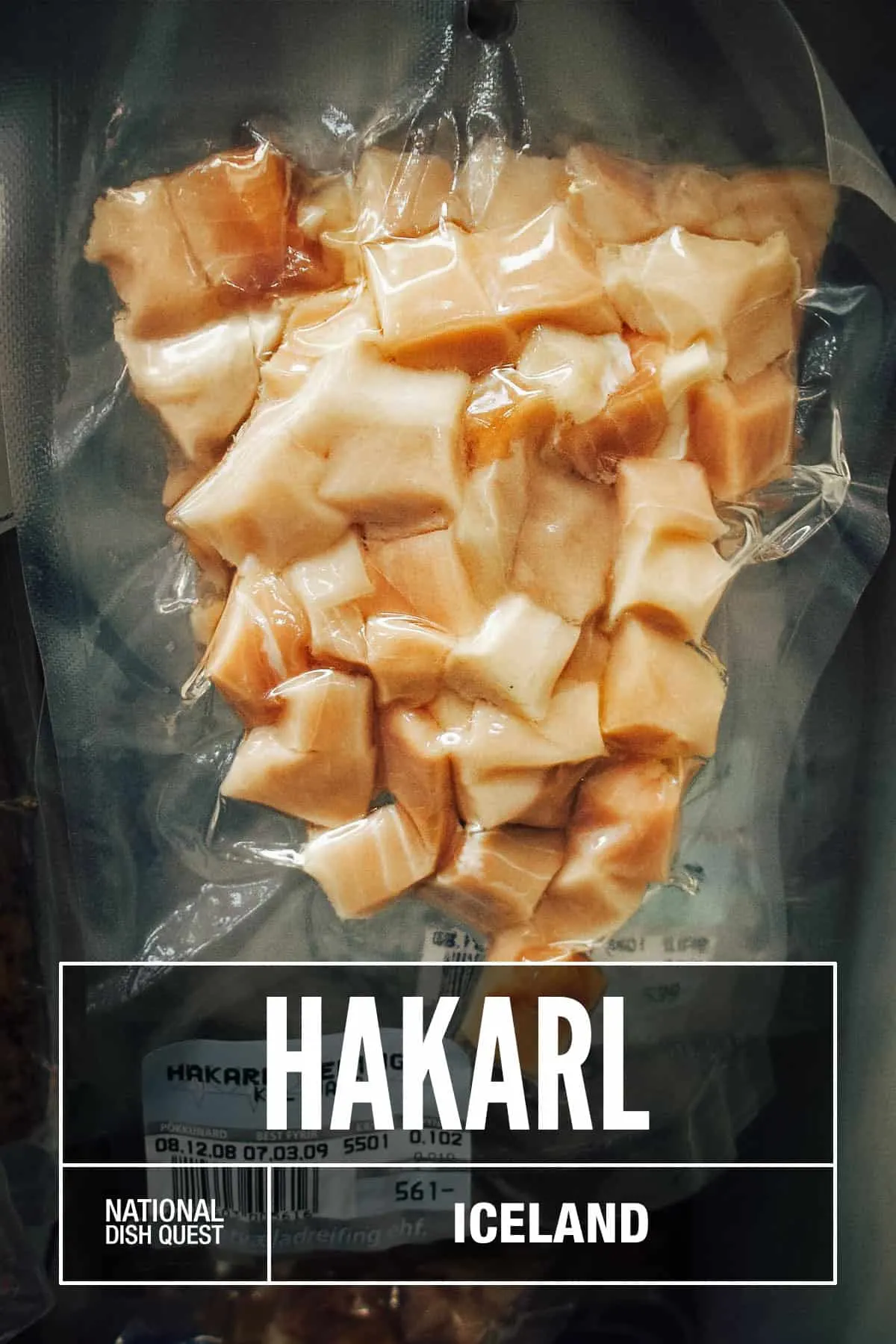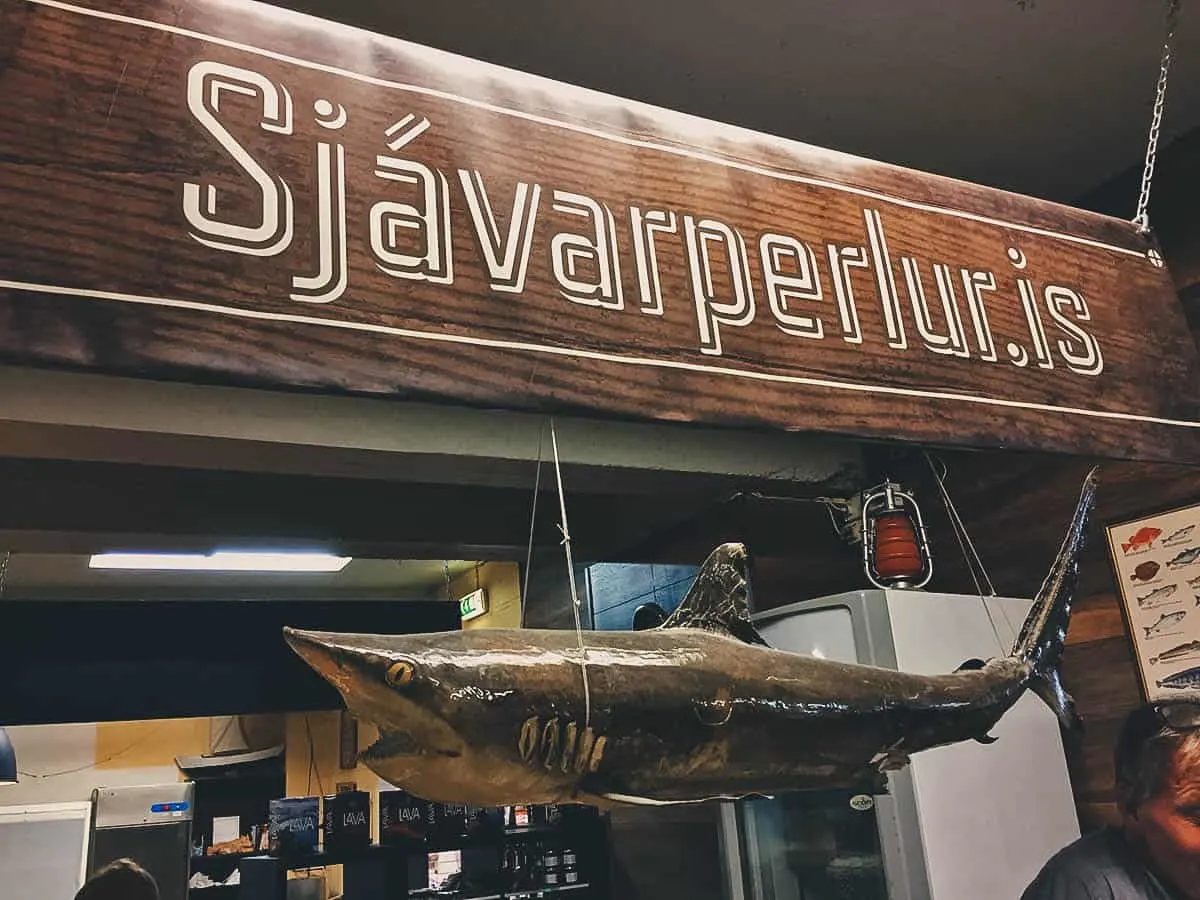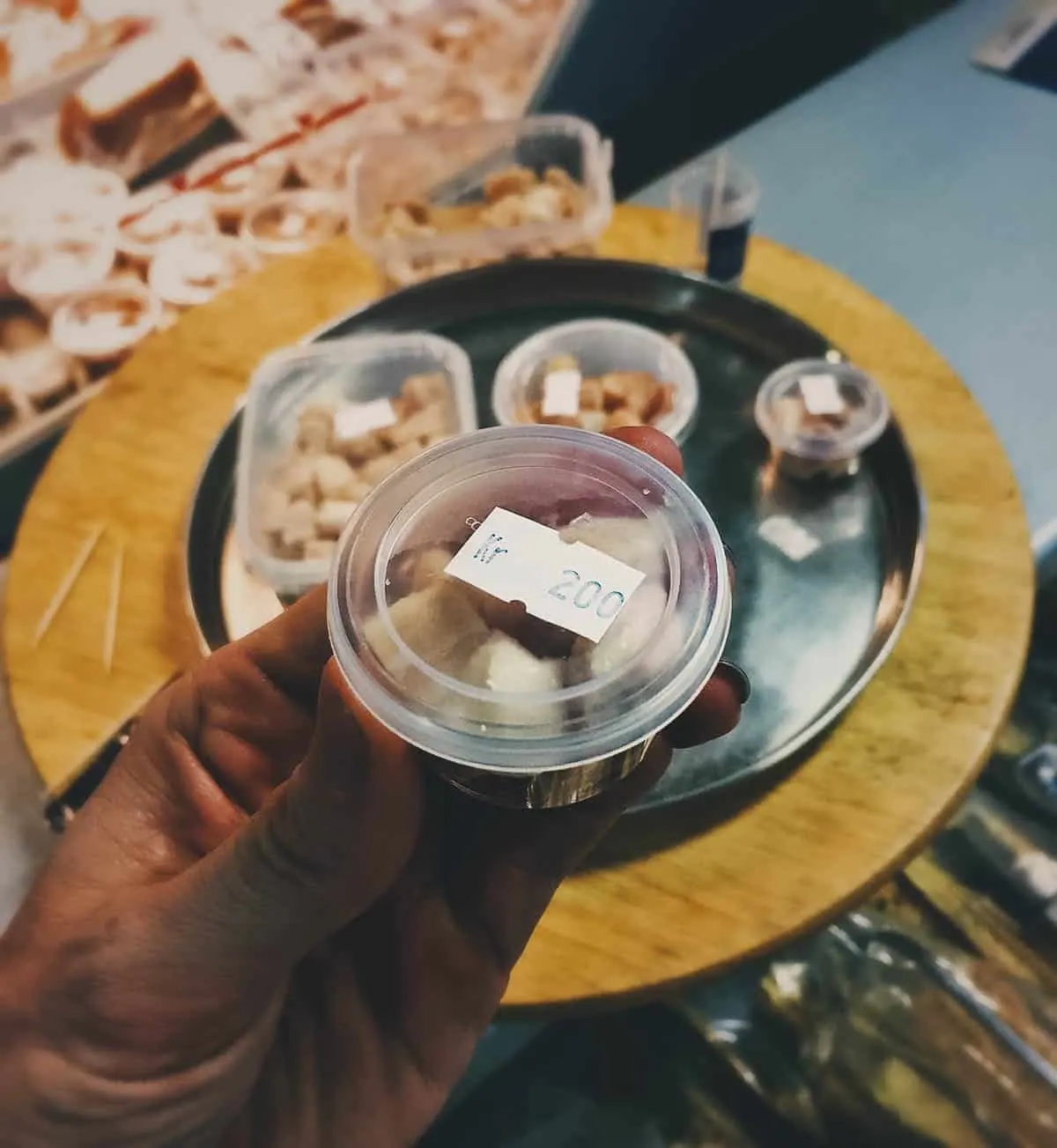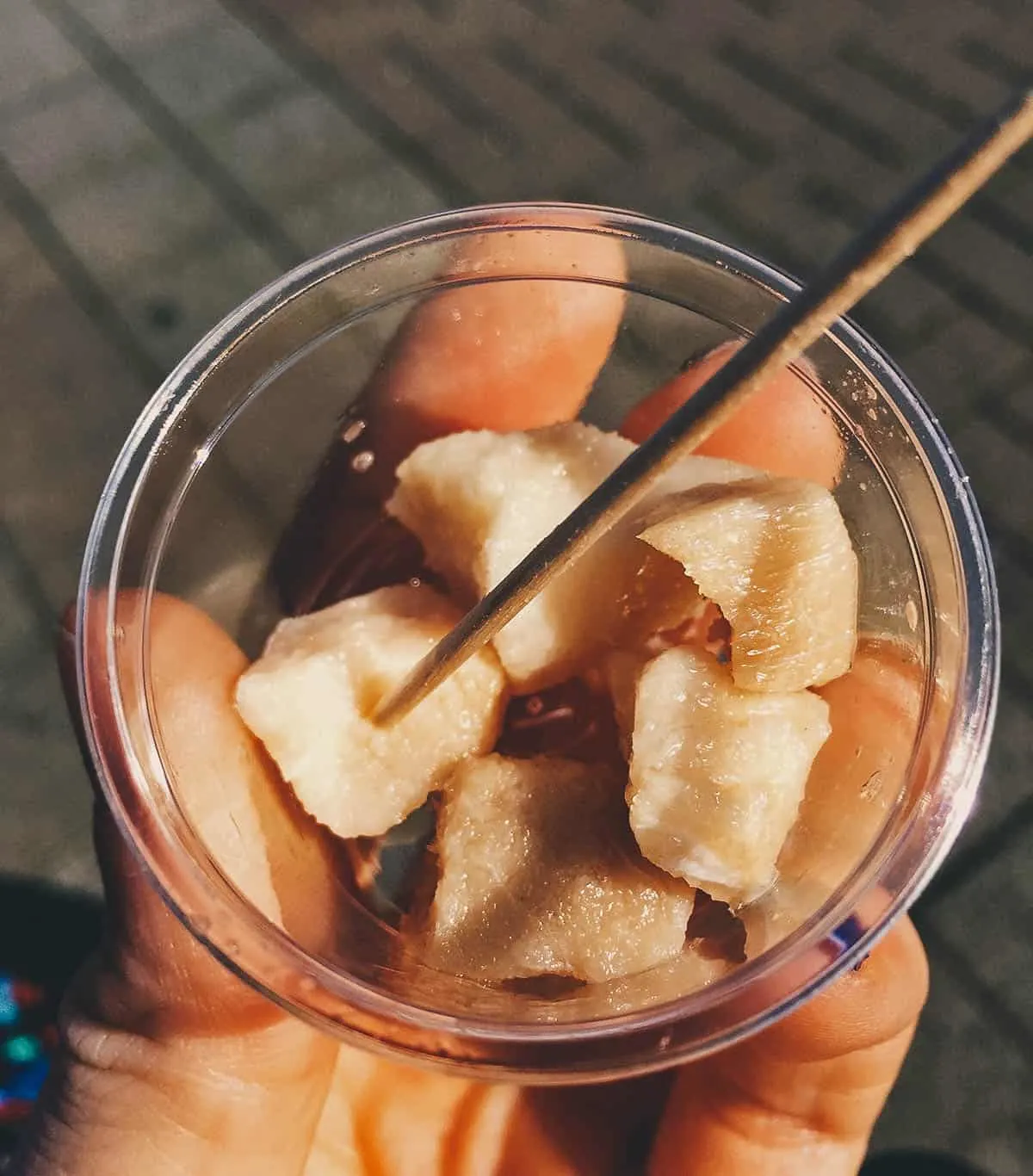EDITOR’S NOTE: Traveleater Chanie Hyde, aka “The Hungry Ginger”, shares with us her experience of trying hakarl, a traditional Icelandic food of cured and fermented Greenland shark meat. Yum.
Hakarl is a national dish of Iceland, consisting of Greenland shark meat, that has been buried, rotten and fermented.
Celebrity chef Anthony Bourdain once stated that Hakarl is the the single worst thing he’s ever tasted. That’s saying something, coming from a man who purposefully eats a lot of strange and unusual dishes.
Save This on Pinterest!
No time to read this now? Click on the red save button and pin it for later!

PHOTO: Jóhann Heiðar Árnason, CC BY-SA 3.0, via Wikimedia Commons / Processed in Photoshop and Lightroom
HOW IS HAKARL PREPARED?
The Icelandic people are very good at sustaining themselves through the harshest of climatic changed by preserving and utilising the entire beast. Hakarl is part of that ilk.
The Viking Icelandic tradition to preserve and eat the Greenland and sleeper sharks has been around for more than a millennia, and is still eaten all year long today. Usually accompanied by a shot of brennivin or “black death” to wash away the taste.

The reason for the fermentation process? Well, the Greenland shark is poisonous to eat in it’s natural state due to extremely high levels of trimethylamine oxide and uric acid in the flesh.
The preparation process that allows consumption, is to gut and behead the shark and place it in a shallow hole dug in gravelly-sand. The hole is covered with sand and gravel, stones are placed on top in order to press out the fluids. The shark cures (read ferments and rots) for 6–12 weeks, depending on the season.
Following curing, the shark is cut into strips and hung to dry for several months. During the drying period, a brown crust will develop, which is removed before cutting it into small pieces and serving in cubes.
An unassuming tub of rotten flesh

WHAT DOES HAKARL TASTE LIKE?
But all of this info isn’t why you’re still reading. You’re want to know what Hakarl tastes like…
In short. Gross. That’s now going to be a satisfying answer so here’s the longer version…
You can grab a taste (a few pieces) of Hakarl at many traditional Icelandic restaurants. Or you can head straight to the Kolaportid Flea Market on a weekend, soak up the local atmosphere and save about $30 in the process.
For the tidy sum of 200 Icelandic Kronur (almost $2 USD), you can have a tub of Hakarl all to yourself.
The first thing you’ll notice is the smell. Cos boy does it stink. Like pee, that’s been in the sun and had animals pee on on it for a few days. It’s quite obvious why it’s recommended not to sniff it before eating it. A tip most ignore and promptly regret.
You’re lucky you don’t have smell-a-vision

At first bite, the taste doesn’t seem so bad. Perhaps this is because a large percentage of taste comes from your olfactory sense, which has just been cremated with the smell of wee. There is a mild slightly white fish tang. Then it hits…
The heavy taste of ammonia creeps up your throat like a live octopus and threatens to consume your entire tastebud factory. It sits there for a while, trying to lay claim to your throat with fishy pee and rotting flesh.
The water will do nothing. If you must have it, have it with the Brennivin.
Obviously there is a reason it’s so popular. Whether it be tourist laughs, nostalgia for olden times or the Icelanders actually like it, Hakarl is definitely an acquired taste.
Smelling the Hakarl: The face of regret.
HEADER IMAGE: “Hakarl – Icelandic delicacy” by Jerick Parrone, used under CC BY-SA 2.0 / Processed in Lightroom
Photos by Chanie Hyde


AURELIO RAMIREZ-ZARZOSA
Sunday 24th of March 2019
HAKARL DOMESTICATED:
We have an animal, a shark, that to not die in frozen water uses urine in blood as a frozen protection (as your car). As many other animals of the artic seas does it. Which has a high Ammonia content. Ammonia is a basic element, not acidic.
So, to eat it you need acidic elements to balance them and settle it down.
We, in Spain, received from my youngest brother 400 grams of HAKARL, he spent for business reasons, the month of November 2018 in one of your nice east fijords.
We tasted it as it is. The Anglo-Saxons and Americans over actuate, they exaggerate it a lot. It is a normal fish meat. Yes, you get the strong ammonia flavour, but that it is all. And the taste with a good vodka matches perfectly. You do not need to open the windows or eat it outside, because of the smell. Unless you are a weak person.
To DOMESTICATE IT we did the following: for 200 grams 1. Rinse it in abundant cold water, 5-6 times, and let it dry, use kitchen paper to dry it. 2. Take a jar and put it inside 3. Squeeze 2 lemons 4. Cut 1 strong half old onion in thin slices, 5. Cut 6 strong spicy vinegar green peppers, cut them in slices 6. Put all in the jar 7. Cover all with Perrins sauce, agitate it several times to have a good mix
Then put it in the fridge in the upper level for a month.
Take it with a good vodka as an aperitive, before lunch and dinner. It retains the same aftermath flavour as with the row one but not the nose strong ammonia effect.
To make this recipe more Icelandic use your more acidic food elements to balance it. Beer vinegar, onions, yoghurt,…
All the best. Aurelio
JB & Renée
Sunday 24th of March 2019
Thanks for sharing Aurelio! Yes, people from that part of the world aren't known for having the most adventurous taste buds so I'm sure it isn't as bad as some people make it sound. We hope to try ourselves as well. :)
Eric
Thursday 26th of October 2017
The video at the end was priceless! Great job! I was lucky enough to try it at a traditional Icelandic meal through my local friend. The meal ncluded the shark, but also whale blubber, smoked lamb, and smashed sheep's face!